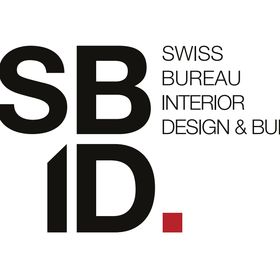Not only visually appealing, a well-planned space also enhances effectiveness, comfort, and even health. Whether it's a home, office, or hospitality setting, professional interior design services can completely rejuvenate a space, making it more productive, welcoming, and attuned to your lifestyle or brand personality. From layouts to materials and lighting, each aspect plays a part in creating a space that's both beautiful and functional.
The Power of Thoughtful Interior Design
Interior design isn't decoration; it's about designing an experience. Well-planned design considers spatial flow, ergonomics, and atmosphere to enhance how humans live in and interact with space. Whether you're designing a modern office, a cozy home, or a high-end hotel, professional designers use skill in selecting color schemes, furnishings, textures, and lighting to achieve a perfect harmony between form and function.
1. Space Optimization and Functionality Enhancement
One of professional interior design's greatest benefits is space maximization. A well-planned design maximizes each square foot, creating a cohesive and user-friendly space. In a corporate environment, it's about designing offices that increase efficiency and productivity without compromising aesthetics. At home, it's about increasing efficiency and comfort, creating spaces that flow naturally.
As a case in point, open-concept spaces are preferred in both residences and offices because they offer a feeling of airy connectedness. However, strategic zoning—by means of furnishings, partitions, or flooring transitions—can create a feeling of structure without compromising openness.
2. Enhancement of Well-being and Mood
Interior design has a powerful impact on mood and mental health. Calming colors, comfortable furnishings, and natural lighting produce a soothing and uplifting atmosphere. Biophilic design with elements such as plants, organic forms, and natural materials has been shown to reduce stress and boost productivity.
Lighting plays a critical part as well. Variable lighting allows for different moods throughout a day—brighter lighting in work spaces and softer, ambient lighting in rest areas. Smart lighting that reacts to patterns in natural daylight can enhance circadian rhythms and lead to improved sleep and overall health.
3. Aesthetic Appeal and Brand Identity
Interior design has a key role in establishing brand identity in business spaces. From a corporate office to a high-end hotel or a boutique shop, design needs to capture a brand's personality and values. Stylish Business Decor with contemporary furnishings, sophisticated lighting, and designed color schemes can give a brand a sense of creativity and professionalism.
Similarly, in a home environment, style and personal taste have to guide design. Industrial, eclectic, Scandinavian, or minimalist—each has a different appeal, and professional designers can personalize a room to convey individuality while ensuring harmony and usability.
Critical Factors in Professional Interior Design Solutions
1. Personalization to Meet Individual Needs
One size does not fit all when it comes to interior design. Professional designers establish each client's unique needs, considering lifestyle, working habits, or brand identity. Customized furnishings, personalized lighting schemes, and specially designed layouts ensure that the space meets its desired use.
For businesses, it can be about designing ergonomic working spaces that promote employee health. For residents, it can be about multi-functional rooms—like a living room that serves as a home office.
2. Smart Technology Integration
Modern-day interior design goes beyond aesthetics—it's about utilizing technology for convenience and efficiency. Smart home automation, temperature regulation, and energy-efficient lighting enhance comfort and reduce environmental impact. In office and business environments, advanced soundproofing, intelligent workstations, and interactive conference rooms create a more productive work environment.
3. Eco-Friendly and Sustainable Options
Sustainability dominates contemporary interior design. From recycling to energy-efficient design, designers have adopted green practices to minimize environmental impact. Low-VOC paint, eco-friendly furnishings, and solar lighting are just a few ways to design greener spaces without sacrificing style or luxury.
Renovating Different Areas with Professional Design
1. Residential Interiors: A Personalized Retreat
Your home should be a reflection of you and a space in which you feel completely comfortable. Professional designers can design a harmonious environment by reconciling form and function. From a living room with open-plan living to a cozy reading nook or a decadent master suite, professional design ensures that each and every detail has been thought out.
2. Office and Commercial Spaces: Fostering Productivity and Brand Image
Thoughtfully planned office space enhances employee satisfaction and efficiency. Natural elements, breakout spaces, open spaces, and ergonomic furnishings can be included in a more dynamic office. Brand identity through interior design—such as incorporating a company's colors and logo in furnishings—creates a strong corporate presence.
3. Retail and Hospitality: Customer Experience Enhancement
Guest experiences in hospitality and retail depend a lot on making a good impression. From high-end stores to luxury hotels, interior design plays a clear part in creating memorable guest experiences. Luxe textures, warm colors, and user-friendly layouts guide customers through a space with ease. Swiss Bureau Interior Design & Build, for example, has set the trend in designing experiential spaces that blend elegance with usability and raise new standards in hospitality and commercial interiors.
The Future of Interior Design
Interior design in the future will be about innovation, individualization, and sustainability. With advancements in technology, homes and workplaces will be equipped with more smart features, simplifying day-to-day activities. Eco-friendly materials and energy-efficient designs will be the new standard, a testament to a renewed emphasis on green living. In addition, flexible spaces that can be adapted to changing needs will be in high demand, to support remote work and multi-functional living.
Conclusion
Renovating a space with professional interior design solutions does not equate to a mere cosmetic touch-up—it equates to elevating comfort, usability, and even health. Well-planned design elements create warm, functional, and refined spaces that address unique needs, whether in home, business, or office environments. With eco-friendly materials, smart technology, and personalized styles, professional designers create spaces that not only look great but also improve how humans live and work. If you're considering a redesign, professional interior design investments can be what makes it stand out. A beautifully designed space isn't just a room—it's an experience.





Comments